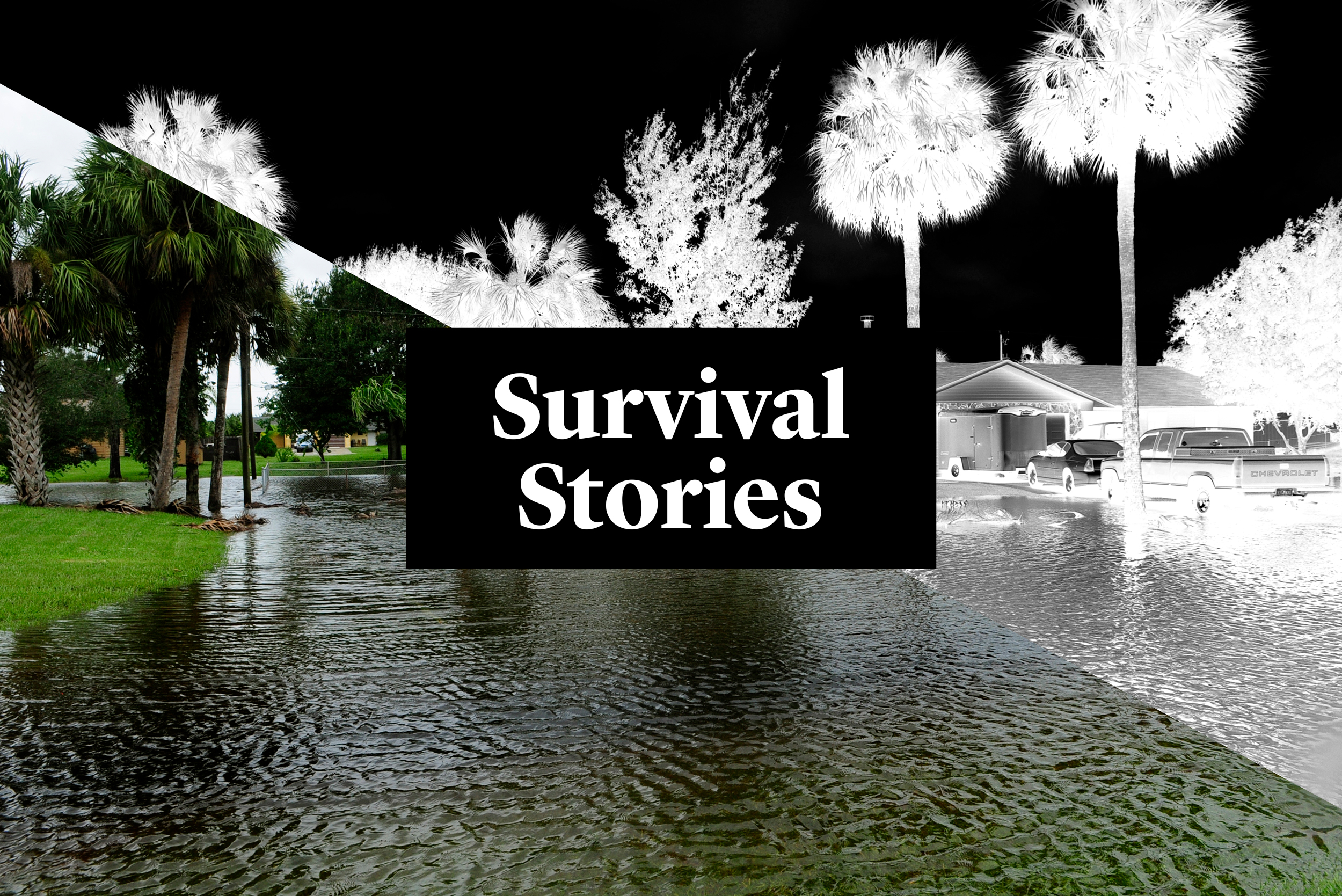Read other Survival Stories from around the country.
In the summer of 2015, I attended a happy-hour event in Little Haiti—a low-income community in Miami, Florida, established as a safe haven for Haitian asylum seekers in the 1980s. I had just returned from graduate school, and I struggled to wrap my head around the fact that well-to-do hipsters were just blocks from some of my Haitian family. Years ago, many of those same hipsters would have thought twice about going out in Little Haiti. Considering a Zillow study that projected Little Haiti to be South Florida’s “hottest neighborhood in 2017,” perhaps I should have expected as much.
I was born and raised in Miami, where I’ve witnessed firsthand the gentrification of what were once predominantly black and brown neighborhoods. Here, climate change is the latest force to contribute to the displacement of people of color. When I was approached by Danielle Belton, editor in chief of The Root, to work on a series about the connections between climate change, gentrification, and their impacts on Miami’s black communities, I was all in.
I wrote in the Color of Climate series that climate is “a threat multiplier” that intensifies the challenges facing those individuals and communities “marginalized by race, income level and immigration status, just to name a few.” Climate gentrification expands upon conventional gentrification by focusing on environmental concerns, like rising sea levels, as central factors in driving out, and oftentimes pricing out, people living in areas that were previously thought to be less valuable.
Racist housing practices drove black people in Miami to create their own communities where they could, which happened to be on higher ground. Now, higher ground is a commodity that residents of black neighborhoods believe to be driving their displacement.
In Miami, access to the sea was always something the rich wanted. But fear of rising sea levels is changing that. Miami Beach, whose population is significantly wealthier than that of Little Haiti, sits just five feet above sea level. Little Haiti, however, sits approximately 10 feet above sea level; the same is true for a number of other predominantly black communities situated more inland.
The historical impacts of redlining and segregation in South Florida still manifest themselves to this day. “Historically, because of segregation and racism, black people were forced to move away from the beach,” Valencia Gunder, a community organizer for New Florida Majority, told me. “They didn’t want us on their pretty beaches.” The historical impacts of redlining and segregation in South Florida still manifest themselves to this day. Racist housing practices drove black people in Miami to create their own communities where they could, which happened to be on higher ground. Now, higher ground is a commodity that residents of black neighborhoods believe to be driving their displacement.
Climate gentrification brings some Miami neighborhoods full circle. Many black residents must grapple with contemporary challenges posed by climate change as those challenges meet with the racist limitations placed on previous generations. Where climate change disproportionately affects a city, journalists should examine the circumstances and histories that help to explain why.
Concerns over gentrification are playing out here before a backdrop of climate change. The firsthand experiences of some residents, shaped by race and class, are not debatable.
After publishing Color of Climate, I moderated a Miami panel about climate gentrification. During the discussion, many black residents spoke up about the pressures they feel from developers and investors to move—or else be moved—from their neighborhoods. For many individuals and families, such pressures add to the daily distress of making ends meet.
There has been some debate as to whether climate gentrification is happening in Miami. A commercial real-estate investor told me he hasn’t seen investors refer to “sea-level rise or climate change.” However, he added, “that’s the kind of thing that people keep to themselves, too. You don’t really want to give away your motivations.”
Concerns over gentrification are playing out here before a backdrop of climate change. The firsthand experiences of some residents, shaped by race and class, are not debatable.
“Climate is a human thing,” Gunder told me during an interview. “It’s not just science.” And human beings are complicated.
As reporters consider the impact of climate change on local communities, it’s crucial that they provide context and examine how previous social, racial, and economic policies shaped those communities to date. They should listen to, and tell, the stories of marginalized communities through an intersectional lens by adjusting for the multiple spaces people occupy. The shifting demographics of a neighborhood may be indicative of climate change’s impact. They should not be ignored.
Survival Stories is a series of local climate change dispatches.
Jessica Moulite is a Social Media Reporter/Producer at Fusion Media Network. Her journalism has appeared in The Root, Fusion, Rise Up, GlobalPost, Neon Tommy, and more. You can find her blogging with her sisters at Daily Ellement.


